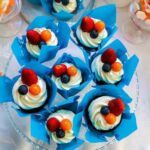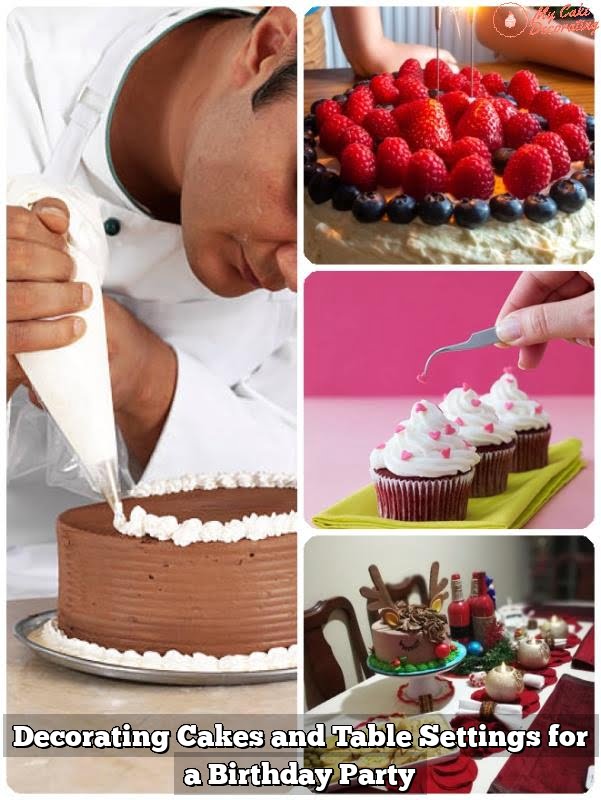Cake decorating is an art form that requires precision and creativity. One tool that plays a crucial role in achieving stunning cake designs is the cake decorating turning table. This article aims to highlight the significance of this essential tool in the world of baking and cake decoration.
A cake decorating turning table serves as a platform for easily rotating cakes while working on their decoration. By allowing the baker or decorator to effortlessly spin the cake, it enhances precision by providing access to all angles of the cake’s surface. This 360-degree accessibility is crucial when applying intricate detailing, elaborately layering frosting, or creating mesmerizing patterns.
Not only does a cake decorating turning table increase precision, but it also boosts creativity. The smooth rotation enables decorators to effortlessly experiment with different design techniques, such as piping, fondant shaping, and airbrushing. It offers a level of control and ease that allows decorators to execute their vision flawlessly.
Exploring the Features of a Cake Decorating Turning Table
A cake decorating turning table is a versatile tool that offers numerous features to enhance the ease and efficiency of cake decoration. Understanding these features can help bakers and pastry chefs make informed decisions when choosing a turning table for their needs.
One important component of a cake decorating turning table is its rotating platform. This platform allows for 360-degree rotation, making it convenient to access different sides of the cake while decorating. Some turning tables also have a locking mechanism to hold the platform in place when needed. Additionally, the platform is typically made from non-slip material to ensure stability during the decorating process.
Another key feature of a cake decorating turning table is its adjustable height. Being able to adjust the height of the turning table provides flexibility and comfort for decorators while working on their cakes. This feature allows decorators to easily switch between various cake sizes and heights, ensuring that they can work at an optimal position without straining their arms or back.
In addition to rotation and height adjustment, many cake decorating turning tables come with additional functionalities such as a tilting mechanism and accessories holders. The tilting function allows decorators to achieve angled designs and apply delicate details with precision. Accessories holders provide convenient storage for tools such as piping bags, spatulas, and brushes, keeping them within easy reach.
By utilizing these various features, bakers and decorators can have greater control over their creative process and achieve stunning results with ease. Whether it’s spinning smoothly for precise piping or adjusting the height for intricate detailing, a well-equipped cake decorating turning table can greatly enhance both precision and creativity in creating beautiful cake designs.
Choosing the Right Cake Decorating Turning Table for Your Needs
When it comes to cake decorating, having the right tools can make a world of difference. One essential tool that every baker should have is a cake decorating turning table. This versatile tool not only enhances precision but also allows for greater creativity in creating stunning cake designs. However, with so many options available on the market, it can be challenging to choose the right cake decorating turning table for your needs.
Size, material, and durability are key factors to consider when selecting a cake decorating turning table. The size of the table should be determined by the size of the cakes you usually work with. A larger table would be suitable for cakes that require more intricate decorations, while a smaller one would suffice for smaller cakes or cupcakes.
In terms of material, cake decorating turning tables are typically made from either plastic or metal. Plastic tables are lightweight and easy to transport, making them ideal for bakers who frequently work at different locations or participate in events such as weddings or parties. On the other hand, metal tables offer greater stability and durability, which is beneficial for those who decorate cakes on a regular basis.
Durability is an important factor to consider as well since investing in a quality cake decorating turning table ensures that it will last longer and provide reliable performance over time. Look for tables with sturdy construction materials and well-designed mechanisms that ensure smooth rotation without wobbling or toppling over.
Budget is another aspect to take into account when deciding on a cake decorating turning table. Prices can vary significantly depending on brand, features, and quality. Determine your budget range beforehand and explore options within that range while keeping in mind important features such as size and durability.
Choosing the right cake decorating turning table can greatly enhance your baking experience and elevate your creations to new heights. By considering factors such as size, material, durability, personal preferences, and budget, you can find the perfect tool that meets all your cake decorating needs. With a high-quality turning table by your side, you’ll be able to create professional-looking cakes that are sure to impress.
| Factors to Consider | Description |
|---|---|
| Size | Determine based on the size of the cakes you work with |
| Material | Choose between lightweight plastic or stable metal |
| Durability | Select a table with sturdy construction and reliable rotation mechanisms |
| Budget | Set a range and explore options within that range, considering important features |
Mastering the Art of Using a Cake Decorating Turning Table
Using a cake decorating turning table can transform the way you approach cake decoration. With its rotating feature, this tool allows for precision and control, enabling you to achieve smooth and flawless finishes on your cakes. In this section, we will provide a step-by-step tutorial on setting up and using a cake decorating turning table, as well as share techniques for achieving professional-looking designs.
First, let’s begin with setting up your cake decorating turning table. Start by ensuring that your work area is clean and free from any distractions. Place your turning table in the center of your workspace and make sure it is level. This is crucial for maintaining stability during the decoration process.
Once your turning table is set up, you can proceed to place your cake on it. Gently lift your cake with a spatula or cake lifter and place it in the middle of the turning table. Ensure that the cake is centered and stable before moving on.
Now that your cake is in position, it’s time to start applying frosting or icing. Hold an offset spatula against the side of the cake at a slight angle and rotate the turning table slowly with one hand while using the other hand to guide the spatula around the edges of the cake. This motion helps create an even layer of frosting or icing.
To achieve smooth sides, hold a bench scraper against the side of the cake while rotating the turning table slowly. Gradually move upwards, scraping off any excess frosting or icing and smoothing out imperfections as you go along.
For adding decorative elements such as borders or patterns, you can use piping bags filled with different colors of frosting or icing. Place one hand steady at one point on top of the bag near where you are squeezing to prevent any sudden movements.
As you gain confidence in using a cake decorating turning table, experiment with different techniques such as creating texture with buttercream combs or using fondant to mold intricate designs. The rotating feature of the turning table will allow you to work on all sides of the cake with ease, giving you greater control and precision.
Mastering the art of using a cake decorating turning table takes practice and patience. Don’t be discouraged if your first attempts are not perfect – it’s all part of the learning process. With time and experience, you will develop your own unique style and techniques that will make your cake designs truly stand out.
Remember to keep practicing and exploring new ideas. The possibilities are endless when it comes to using a cake decorating turning table, and with each creation, you will continue to unleash your creative potential in the world of cake decoration.
Expanding Creative Possibilities
Showcasing Intricate Detailing
A cake decorating turning table opens up a world of creative possibilities when it comes to intricate detailing on cakes. With the ability to smoothly rotate the cake, decorators can easily apply delicate piping or sugar paste work to create stunning and precise designs. Whether it’s intricate floral patterns, scrolling borders, or even delicate lettering, a turning table provides the perfect platform for achieving professional-level detailing.
Enhancing Elaborate Layering
Creating cakes with multiple layers can be a challenging task without a turning table. However, with this tool, bakers can effortlessly build and stack layers while maintaining stability and consistency throughout each tier. The rotating function ensures that decorators have full control and visibility as they add fillings, frostings, or ganache between layers. This not only streamlines the process but also allows for flawless alignment and straight edges that result in impressive layered cakes.
Crafting Mesmerizing Patterns
A cake decorating turning table is an invaluable tool for those looking to experiment with mesmerizing patterns. By utilizing different angles and rotations, decorators can achieve stunning effects like swirls, waves, or chevron designs on their cakes.
The smooth rotation of the turning table enables precision when using tools such as comb scrapers or brushes to create these visually captivating patterns. With a turning table at hand, the only limit is one’s imagination when it comes to crafting unique and eye-catching designs.
By utilizing a cake decorating turning table, bakers unlock endless possibilities for creating intricate detailing, elaborate layering, and mesmerizing patterns on their cakes. Whether it’s adding delicate piping work or achieving consistent layers throughout tiers, this tool enhances precision and creativity in cake decoration.
Furthermore, decorators can experiment with various angles and rotations to craft stunning patterns that will impress any audience. A cake decorating turning table truly takes cake decoration to new heights, allowing bakers to expand their creative potential and excel in their craft.
Troubleshooting Common Challenges when Using a Cake Decorating Turning Table
When using a cake decorating turning table, it is not uncommon to encounter various challenges that can disrupt the smoothness and efficiency of the cake decoration process. However, with some troubleshooting knowledge and solutions at hand, these challenges can be easily overcome. In this section, we will address some common issues that cake decorators may face when using a cake decorating turning table and provide helpful tips for a seamless experience.
Instability
One of the most common issues with a cake decorating turning table is instability. This can make it difficult to create precise designs and smooth finishes on cakes. To address this problem, there are a few things you can do:
- Ensure that the turning table is placed on a level surface. Uneven surfaces can cause wobbling and instability.
- Check the stability of the base or stand of the turning table. Make sure all parts are securely tightened.
- Consider using a turntable with a non-slip base or adding grip pads underneath to prevent movement.
Leveling Difficulties
Achieving an even and level surface on your cake is crucial for professional-looking designs. If you’re having trouble leveling your cake on the turning table, here are some suggestions:
- Invest in an adjustable-height turning table that allows you to easily raise or lower the cake as needed.
- Use a spirit level to ensure the turning table itself is level before placing your cake on it.
- If necessary, trim any excess height from your cake layers before placing them on the turning table.
Choosing the Appropriate Rotating Speed
Finding the right rotating speed for your specific design needs is important to ensure smooth and controlled movements while decorating your cake. Consider these tips:
- Start with a low rotating speed until you feel comfortable and in control of your movements.
- Adjust the rotating speed based on your design requirements – slower for detailed work and faster for broader strokes.
- Practice and experiment with different rotating speeds to find the optimum setting for your specific techniques.
By addressing these common challenges when using a cake decorating turning table, you can enhance your overall experience and achieve professional-looking results. Remember that practice makes perfect, and with time, you will become more skilled at troubleshooting any issues that may arise.
Tips and Tricks for Maintaining and Cleaning Your Cake Decorating Turning Table
Maintaining Your Cake Decorating Turning Table
Proper maintenance is essential for ensuring the longevity and performance of your cake decorating turning table. Here are some tips to keep in mind:
- Regular Cleaning: After each use, clean the surface of your turning table with a damp cloth or sponge and mild dish soap. Avoid using abrasive cleaners, as they can damage the finish. Ensure that all residue and icing are completely removed.
- Lubrication: Apply a small amount of food-grade lubricant or vegetable oil to the rotating mechanism of your turning table on a regular basis. This will prevent any squeaking or sticking and ensure smooth rotation.
- Checking for Loose Parts: Regularly inspect your turning table for any loose screws or parts that may need tightening. Over time, frequent usage can cause these components to loosen, affecting the stability and efficiency of the table.
- Storage: When not in use, store your cake decorating turning table in a cool, dry place away from direct sunlight and extreme temperatures. This will help prevent warping or damage.
Safe Cleaning Practices
When cleaning your cake decorating turning table, it’s important to follow safe practices to avoid any damage:
- Electrical Safety: Before cleaning any electrical components of the turning table, ensure that it is unplugged from the power source.
- Avoid Excessive Moisture: While it is necessary to clean the surface of the turning table, be cautious not to oversaturate with water or cleaning solutions. Excessive moisture may seep into sensitive electrical parts, leading to malfunctioning.
- Drying Thoroughly: After cleaning, make sure to dry all parts of the turning table completely before storing or using it again. This helps prevent rusting and maintains its overall condition.
Preventing Damage and Wear
To prevent unnecessary damage and wear on your cake decorating turning table, consider the following tips:
- Use Gentle Utensils: When working on the surface of the turning table, use utensils that are specifically designed for cake decoration. Avoid sharp tools or abrasive materials that could scratch or damage the table’s surface.
- Avoid Excessive Weight: Be mindful of the weight capacity of your turning table and avoid placing heavy cakes or decorations on it. Exceeding the weight limit can strain the rotating mechanism or cause instability.
By following these maintenance and cleaning practices, you can ensure that your cake decorating turning table remains in top-notch condition and continues to provide you with many years of excellent performance.
Exploring Alternatives
For those who are looking for a more budget-friendly option or enjoy DIY projects, there are alternative solutions to consider when it comes to a cake decorating turning table. While commercially available turning tables offer convenience and durability, there are creative DIY methods that can provide a functional and affordable solution for aspiring bakers and decorators.
One option for a DIY cake decorating turning table is using a lazy susan mechanism. A lazy susan can be easily found at home improvement stores or online, and it provides the rotational capability needed for cake decoration. To turn it into a turning table, simply attach a non-slip surface on top of the lazy susan and secure it in place. This can be done using adhesive or by drilling screws through the lazy susan into the surface.
Another possible DIY solution is utilizing a repurposed record player. Old record players with turntable functionality can be transformed into effective cake decorating spinning platforms. By removing the arm and platter, as well as ensuring the turntable is level, decorators can use this alternative option to achieve smooth rotation for their cakes.
While these DIY alternatives may not have all the features and functionalities of commercial cake decorating turning tables, they can still provide sufficient rotation for basic cake decoration needs. It is important to note that homemade options might not offer the same stability or long-term durability as professionally manufactured turning tables; however, they can be an excellent starting point for beginners or those on a tight budget.
Conclusion
In conclusion, a cake decorating turning table is an essential tool for anyone in the world of baking and cake decoration. Its significance lies in its ability to enhance precision and creativity, allowing bakers to create stunning cake designs with ease. By exploring the various features of a cake decorating turning table, individuals can understand how these components contribute to the ease and efficiency of cake decoration.
Choosing the right cake decorating turning table is crucial, as it determines the overall experience and outcome of cake decoration. With a comprehensive guide on selecting the ideal turning table based on size, material, and durability, individuals can make informed decisions that suit their personal preferences and budget.
Additionally, mastering the art of using a cake decorating turning table is essential for achieving smooth and flawless cake finishes. Through step-by-step tutorials and techniques shared in this article, bakers can elevate their skills and create mesmerizing patterns with intricate detailing.
By investing in a cake decorating turning table, individuals unleash their creative potential in any professional or hobbyist bakery. This tool not only expands creative possibilities by enabling elaborate layering and mesmerizing designs but also helps troubleshoot common challenges that may arise during use. By following proper maintenance practices and cleaning methods outlined in this article, bakers can extend the lifespan of their turning table while preventing damage or wear and tear.
Frequently Asked Questions
Do you really need a cake turntable?
While a cake turntable can be a helpful tool for cake decorating, it is not necessarily a requirement for everyone. A cake turntable allows for easier access to all sides of the cake, which can make frosting and decorating more convenient and efficient.
It provides a smooth surface that helps achieve even layers of icing and helps in creating sharp edges. However, if you are comfortable rotating the cake by hand or using alternative methods to achieve your desired decorations, then a cake turntable may not be absolutely necessary.
Which turntable is best for cake?
The best turntable for cakes ultimately depends on personal preference and specific needs. There are various options available in the market, ranging from simple plastic turntables to sturdy metal ones with ball bearings for smoother rotation.
Some factors to consider when choosing a cake turntable include stability, ease of rotation, height adjustment capabilities, and durability. It’s important to select one that suits your specific requirements and fits within your budget.
What can I use instead of a cake turntable?
If you don’t have access to a cake turntable or prefer not to use one, there are alternatives that can work as substitutes in certain situations. One option is using an overturned bowl or large plate placed on top of a damp towel or non-slip mat to create stability while manually rotating the cake during decoration.
Another alternative is placing the cake on an inverted lid or pie pan with its edges partially resting on cups or glasses strategically placed around the base to allow rotation while providing stability.

Welcome to my blog about home and family. This blog is a place where I will share my thoughts, ideas, and experiences related to these important topics. I am a stay-at-home mom with two young children. I hope you enjoy reading it! and may find some helpful tips and ideas that will make your home and family life even better!





